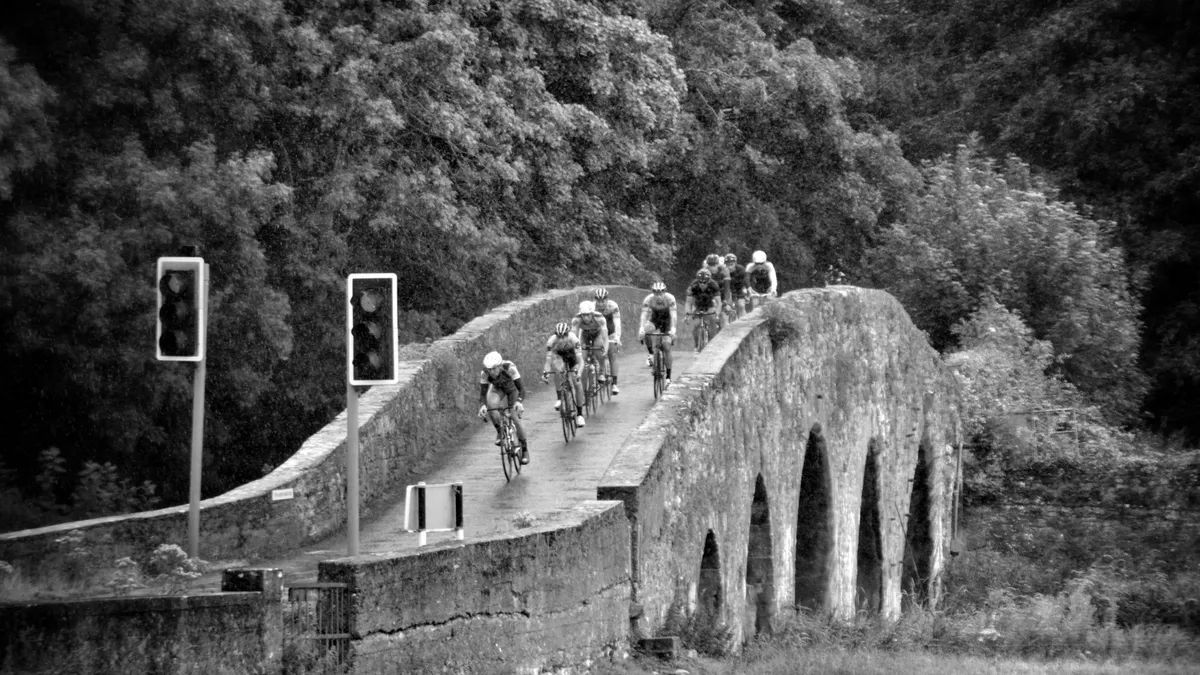This is a sponsored post in association with A1 Coaching.
You’ve probably heard people talking about ‘the numbers’, from the club rider at the local time trial, to Bradley Wiggins’ hour record, or the release of Chris Froome’s performance data.
What are these numbers? In basic terms, they’re simply a means of describing physiological performance, which can be measured in a standardised way.
- Click here for free access to A1 Coaching’s winter training video series
- How to get more speed with less training
- The phenomenon of 'headless-chicken' riding
Here I’m going to explain what your most important number is – your ‘threshold’ – and describe a key performance test you can do to find that number. Based on that data, I will then explain how to set up your unique training zones.
This series is about getting more speed with less training and in the previous post of the series I explained the need to embrace this new knowledge and method. Therefore, taking the time to get a grasp of these strategies is a key step in your development as an athlete and the gateway to structured, time-efficient, smart training.
As a first step on this journey I’ve described the three basic physiological systems which have to be targeted, and summarised the main training zones. By getting to know your threshold and setting training zones as I’ll describe here, you can begin tailoring training to your precise fitness levels, monitor your fitness progression, and begin getting more speed from less time.
Threshold: the key number
“What’s your threshold?” This is the type of question riders in the know ask each other, rather than “what is your average speed” – they are aware of the importance of intensity and training zones. Threshold is the key variable in this.
Threshold is a shorthand for ‘functional threshold power’, or FTP for short (other similar terminology is also used: lactate threshold, anaerobic threshold and so on, but they all essentially mean the same thing to the everyday rider).
In my previous post I explained threshold, or FTP, as the maximum effort you can maintain over an extended period (usually measured over one hour). It’s the ‘threshold’ of effort beyond which the body can no longer process accumulating lactate in the muscles and you begin slowing down. This is a key indicator of your fitness level.

Your protocol for measuring threshold
A word of warning before we begin: some principles and methods I’m introducing here may seem daunting. But the time spent getting to grips with them will be minimal compared with the overall time you spend training. It’s worth sticking with – in my experience, the biggest boost riders get is through adherence to zonal training and, with a little perseverance, you’ll be talking to friends in your new language in no time.
There are various ways of measuring threshold. You can go into a sports lab and get it done accurately through blood analysis. But this is expensive and, if you want to establish whether your threshold is raised after six weeks’ training, you have to go back and get it done again. And so on.
On the other hand, the test protocol I’m describing here is easy to do and adequate for most amateur riders. By ‘protocol’ I mean a way of doing it the same way all the time. Consistency is important. While there are various protocols described by different coaches and authors, the most important thing is that you stick to one method, or protocol, all the time.
When and where?
When you do the test is an important part of the protocol. If you do one test after a very heavy training block, and another after a recovery or rest period, the results will be inconsistent in relation to each other because you are not following the protocol.
The time preferred by most for the test is towards the end of a recovery period, when you are pretty fresh and you can give your best effort.
Similarly, you should repeat the test on the same route. It should have no interruptions such as traffic lights or roundabouts. Many riders like a slight uphill gradient.
Heart rate (HR) and power differences
While threshold is the maximum effort you can sustain for an hour, the all-out part of the test doesn’t actually last for an hour. The basic reason is that it would be so hard that most people just wouldn’t be motivated enough to do it. So, we have a shorter method which will give an equally accurate result and the all-out effort lasts for just 30 minutes if you are using heart rate (HR) and 20 minutes if you are using power.
The reason you need to do 30 minutes if using HR is because it takes some time for your HR to pick up to match your effort – so-called ‘heart-rate lag’. The first 10 minutes are for your heart rate to get up to threshold HR, and you then only record the final 20 minutes average.
The protocol – finding your threshold
The following is a basic protocol for measuring your threshold – it begins with a preparatory phase:
- Warm up in your usual way, for at least 15 minutes.
- Do an all-out three-minute effort that’s evenly paced – this helps get the body ready for the effort ahead.
- Follow this with a five-minute easy recovery.
- Next comes that actual test, which varies slightly with heart rate or power. For power, do a 20-minute, all-out effort similar to a time trial – your effort is the maximum that you can sustain for that period. Get your average output in watts for the 20 minutes either by starting and stopping your computer, or inserting laps. For heart rate, do a 30-minute effort similar to above, but only get your average heart rate for the final 20 minutes.
- Follow with a cool-down.
- The final stage is to calculate your threshold from the data you collected. This is the power or heart rate figure recorded, minus 5%. This deduction estimates what the figure would have been for the full hour.
- For example, if your average power was 270 watts, then your threshold (or FTP) is 256.5 watts (270 x .95 = 256.5).
- Or, if your heart rate was 170 beats per minute, then your threshold heart rate is 161.5 beats per minute (170 x .95 = 161.5).
- Now you have a key number – your threshold or zone 4 – and you can begin to calculate your other training zones.

How often?
If you’re using power I recommend repeating the test every six weeks. This allows your body enough time to adapt to your training programme – and you will need to recalculate your zones if you are improving.
On the other hand, if you are using HR, your threshold heart rate does not change significantly once you are reasonably fit and there is no point in repeating the test, other than to confirm or refine the figure. Also, unlike power, a high threshold heart rate is not an indicator of more performance.
There is a learning curve involved in doing the test satisfactorily and it may take a little practice to do it consistently, and especially to measure the effort evenly. Remember, follow the protocol!
Setting your zones
Now you have your key number – your threshold – it’s simple to set your zones by doing some basic calculations based on the table below.
In this table I have included ‘the rate of perceived exertion’ (RPE) for each zone – this is what it feels like. With a little practice you will be able to judge which zone you are in reasonably accurately just from feel and it’s important as, in time, you should get to know your body and not be dependent on ‘the numbers’ all the time.
I have also included the physiological system that’s being most developed in each zone but, as I pointed out, it is vitally important that training in the higher intensities will also bring you gains in endurance.
While this table brings together much of what I wrote about in this and the previous blog, you can simplify it into just one column – the zones with the calculated figure based on either your power or HR data.
ArrayA little additional time spent now, understanding these methods and how your body works and gets fitter, will save you countless time with ineffective training methods. Adopting the principles I’m advocating will mean you can implement training prescriptions, monitor progress, compare yourself with peers, and tax the specific physiological systems necessary for your target events.
Now you’re able to set your zones, in my next post I will explain what a typical training week looks like based on this reasoning.
